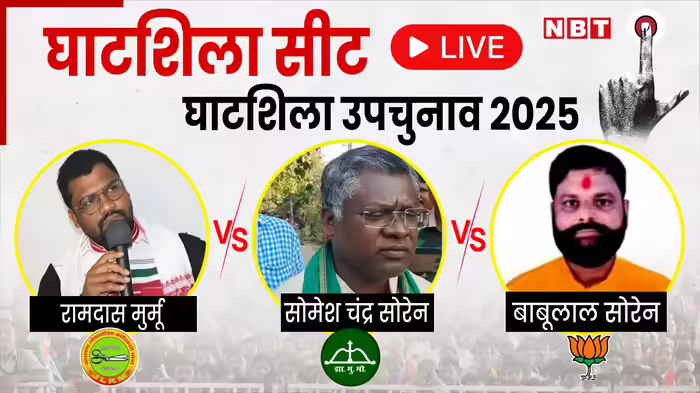
Ghatshila, Jharkhand: The Ghatshila Assembly by-election 2025 has turned out to be a closely fought battle between the National Democratic Alliance (NDA-BJP) and the India Alliance (JMM). Counting of votes began at 8:00 AM on 14th November, with live updates keeping voters on edge throughout the day.
Key Highlights from the Counting
- Somesh Chandra Soren of the Jharkhand Mukti Morcha (JMM) is leading the race with 16,110 votes, ahead of BJP candidate Babulal Soren, who has secured 8,569 votes.
- Ramdas Murmu of JLKM received 5,278 votes, while candidates from smaller parties and independents accounted for the remaining votes.
- JMM’s lead widened progressively across rounds of counting:
- Round 1: Soren 5,450 | Babulal Soren 2,204 | Ramdas Murmu 3,286
- Round 2: Soren 10,919 | Babulal Soren 5,465 | Murmu 4,972
- Round 3: Soren 16,110 | Babulal Soren 8,569 | Murmu 5,278
Voting Trends and Voter Turnout
The by-election recorded a high turnout of 73.88%, reflecting strong public engagement. Special arrangements ensured accessibility for differently-abled voters (93.63% participation) and senior citizens over 85 years (90.62% participation). Postal ballots and VVPAT slips were also counted to ensure transparency.
Political Context
- JMM Strategy: Relied on its traditional tribal voter base and welfare schemes. The “Hemant Soren factor” and local identity politics played a significant role in mobilizing support.
- BJP Strategy: Focused on non-tribal and OBC votes, leveraging Prime Minister Narendra Modi’s popularity, national issues, and local development promises.
Counting Logistics
The votes were counted at Cooperative College, Jamshedpur, under tight security and strict supervision. Fifteen counting tables handled 20 rounds of tallying. Each table had a dedicated observer, assistant, and micro-observer, with CCTV monitoring and tri-level security protocols to maintain integrity and transparency.
Election Significance
The Ghatshila by-election is considered a prestige battle for both alliances. As results unfold, it is seen as a litmus test for party influence in tribal-majority and industrially significant constituencies.
Discover more from SD NEWS agency
Subscribe to get the latest posts sent to your email.